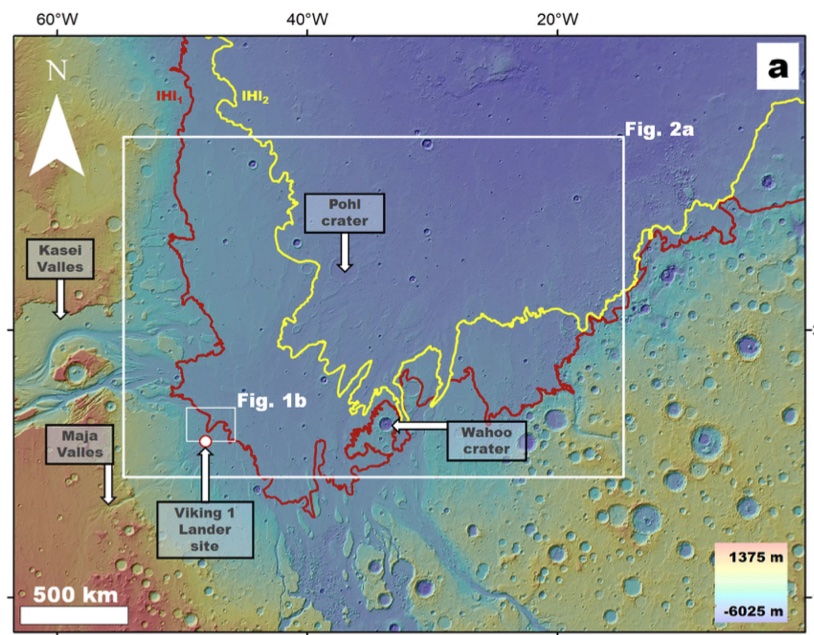Megatsunami on Mars
Our arid neighboring world once had seas, too – and with them all the catastrophes our Earth has experienced over its long existence. Right up to a megatsunami like the one after the Chicxulub impact – which contributed to the mass extinction of all non-avian dinosaurs on Earth 66 million years ago. On Mars, however, the last such event was much longer ago. 3.4 billion years, in fact, as some studies have already suggested.
A new study published in Scientific Reports now brings more details to light. Alexis Rodriguez and his colleagues analyzed maps of the Martian surface created by combining images from previous missions to the planet and identified an impact crater that may have caused the megatsunami. The crater, which they named Pohl, is 110 kilometers in diameter and is located in an area of northern lowland that earlier studies suggested might have been covered by an ocean, in a region about 120 meters below proposed sea level. The authors suggest that Pohl may have formed about 3.4 billion years ago because it lies above and below rocks previously dated to that time.
The authors simulated asteroid and comet collisions with this region to test what type of impact could have caused Pohl and whether it could have resulted in a megatsunami. They found that the simulations, which formed craters of similar dimensions to Pohl, were caused by either a nine-kilometer asteroid that encountered strong ground drag and released 13 million megatons of TNT energy, or a three-kilometer asteroid that encountered weak ground drag and released 0.5 million megatons of TNT energy. In contrast, the amount of energy released by the Tsar bomb, the most powerful nuclear bomb ever tested, was only about 57 megatons of TNT energy. Both simulated impacts formed craters 110 kilometers in diameter and created megatsunamis that wreaked havoc up to 1,500 kilometers from the center of the impact site. Analysis of the megatsunami caused by the three-kilometer-diameter asteroid impact showed that this tsunami could have reached a height of up to 250 meters on land.
The authors suggest that the aftermath of the proposed Pohl impact had similarities to the Chicxulub impact on Earth, which, according to previous findings, occurred in a region 200 meters below sea level, created a crater with a temporary diameter of 100 kilometers, and triggered a megatsunami with a height of 200 meters on land.
